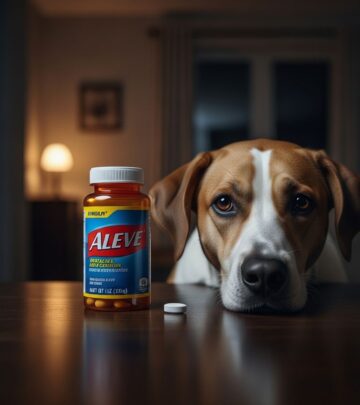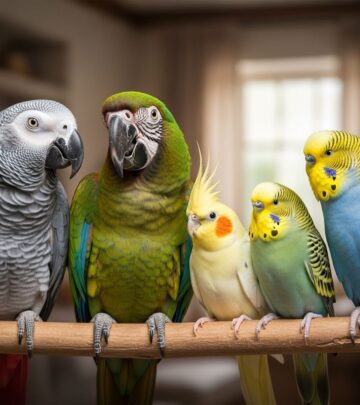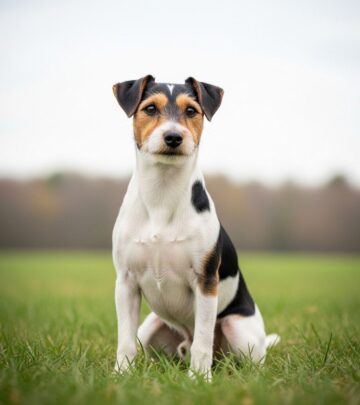Cloudy Eyes in Dogs: Causes, Symptoms, and When to Worry
Spotting vision issues in time helps keep your companion comfortable and carefree.

Image: HearthJunction Design Team
Cloudy Eyes in Dogs: Understanding Causes, Symptoms, and Treatments
Every pet owner hopes to see their dog’s eyes brimming with clarity and alertness. Cloudy eyes can be a troubling sign, whether they appear suddenly or gradually develop. Cloudiness in a dog’s eye can signal anything from a benign age-related change to a medical emergency threatening vision. Recognizing the causes and knowing when to seek urgent care can help you protect your pet’s health and comfort.
What Does it Mean When a Dog Has Cloudy Eyes?
Cloudy eyes in dogs refer to a visible haziness, grayness, or bluish-white discoloration that obscures the normally clear surface of the cornea or the lens beneath it. This change can occur gradually or appear quite suddenly. While sometimes related to normal aging, cloudiness may also be a sign of eye injury, infection, or disease, some of which require immediate veterinary attention to prevent pain or permanent blindness.
- Cloudiness can affect one or both eyes.
- Not all cases result in pain, but some do—and these are often most urgent.
- Cloudy eyes can be accompanied by redness, discharge, squinting, or behavioral changes.
Common Causes of Cloudy Eyes in Dogs
Multiple eye structures may be involved in cloudiness. Here are the most frequent culprits:
1. Nuclear (Lenticular) Sclerosis
Nuclear sclerosis is the most common reason older dogs (typically over 7 years) start developing a bluish-gray haze. This is a normal, age-related hardening of the lens. It rarely impairs vision and doesn’t cause discomfort.
- Develops gradually in both eyes.
- Does not cause pain or abrupt vision loss.
- Distinguishing from cataracts may require a veterinary examination.
2. Cataracts
Cataracts are white, opaque areas that develop in the lens, blocking the passage of light and leading to impaired vision. They may be genetic, age-related, or develop secondary to conditions like diabetes.
- Appear as clearly white or cloudy spots within the pupil.
- Can eventually cause blindness if untreated.
- Some breeds (such as Cocker Spaniels, Poodles) have a higher predisposition.
- May progress slowly or rapidly.
3. Glaucoma
Glaucoma is a rapid, painful increase in pressure inside the eye, often resulting in a cloudy bluish cornea, redness, and a dilated pupil. If not managed quickly, glaucoma can cause permanent blindness within hours to days.
- Cloudiness appears suddenly, often with redness and tearing.
- Pain is almost always present (look for squinting, rubbing, or withdrawal).
- This is a veterinary emergency.
4. Corneal Ulcers or Injuries
Corneal ulcers and scratches cloud the normally clear corneal surface. These often result from trauma (like pawing the eye, thorns, or rough play), infection, or another disease.
- Often with visible injuries, redness, severe squinting (pain).
- Can worsen rapidly if not treated.
- Injuries need prompt medical care to avoid scarring or rupture.
5. Dry Eye (Keratoconjunctivitis Sicca)
Dry eye is a chronic failure of tear production, often seen in certain breeds. This can lead to corneal drying, damage, and cloudiness, with or without thick discharge.
- Sticky, yellow discharge may coat the eye.
- Chronic discomfort and redness.
- Can lead to ulcers or vision loss if untreated.
6. Uveitis
Uveitis is inflammation inside the eye, affecting critical structures. It can cause cloudiness, redness, severe pain, and may signal a systemic infection or immune-mediated disease.
- Pain, photophobia (light sensitivity), and a cloudy, sometimes bluish eye.
- Pupil often constricted (small).
- This can progress to glaucoma or blindness.
7. Corneal Dystrophy
Corneal dystrophy consists of inherited conditions causing cloudiness in the cornea due to deposits (typically cholesterol, fat, or minerals). These rarely cause pain but may affect vision over time.
- Appears as white, crystalline spots in the cornea.
- Tends to run in families or breeds (e.g., Siberian Huskies, Shelties).
Recognizing Symptoms: Spotting An Emergency
Not all cloudy eyes are equally urgent. Here’s how to tell if your dog needs emergency veterinary attention:
| Urgent Signs | Less Urgent Signs |
|---|---|
|
|
If your dog has pain, redness, rapid changes, or trouble seeing, seek veterinary care immediately.
Diagnosis: How Vets Determine the Cause
A veterinary exam is essential to determine the underlying cause of cloudy eyes. Diagnosis typically involves:
- Physical and ophthalmic exam (using lights and specialized tools)
- Fluorescein dye test (checks for corneal ulcers)
- Tear production testing (Schirmer test)
- Tonometry (measures eye pressure for glaucoma)
- Bloodwork (if systemic disease is suspected)
Identifying the root cause early increases the likelihood of successful treatment and helps preserve vision.
Treatment Options for Cloudy Eyes in Dogs
Treatment will depend entirely on the underlying diagnosis:
- Nuclear Sclerosis:
- No treatment required; it is a benign, age-related change.
- Monitor for the development of cataracts or other issues.
- Cataracts:
- Early cataracts may be monitored for progression.
- Surgical removal can restore vision in eligible patients.
- Identify and manage underlying diseases, like diabetes.
- Glaucoma:
- Emergency medications to reduce pressure.
- Surgical treatments may be necessary.
- Long-term management typically required.
- Corneal Ulcers/Injuries:
- Topical antibiotics or antifungals, pain management.
- Severe cases may require surgical intervention.
- Dry Eye:
- Lifelong topical medication to stimulate or replace tears.
- Treat underlying causes as needed.
- Uveitis:
- Topical steroids, immune-modulating treatments.
- Address any underlying systemic disease.
- Corneal Dystrophy:
- Rarely requires treatment.
- Monitor for complications (ulcers or vision loss).
Home Care and Monitoring
- Gently wipe away minor discharge with sterile saline and a clean cloth.
- Prevent your dog from rubbing the affected eye—use an Elizabethan collar if necessary.
- Do not use human eye drops or medications unless specifically directed by your veterinarian.
Prevention: Keeping Your Dog’s Eyes Healthy
- Routine veterinary checkups – especially for older pets and breeds prone to vision disorders.
- Promptly address any redness, discharge, or squinting.
- Good diabetes control may help prevent cataracts in diabetic dogs.
- Protect eyes from injury during play or in rough environments.
Cloudy Eyes and Vision Changes: Is My Dog Going Blind?
Cloudiness does not always mean blindness. Many mild, age-related changes occur that do not affect vision. However, sudden changes, especially with other symptoms, should never be ignored. Your veterinarian can help you distinguish harmless changes from more severe problems and preserve your dog’s quality of life.
Frequently Asked Questions (FAQs) About Cloudy Eyes in Dogs
Q: Are cloudy eyes in dogs an emergency?
A: Not always. Gradual cloudiness without redness or pain might be a normal aging change. If cloudiness develops suddenly, is painful, or accompanied by redness, swelling, or vision changes, it can be an emergency.
Q: Can cloudy eyes in dogs be treated?
A: Yes, depending on the cause. Early treatment often results in better outcomes, so prompt veterinary evaluation is crucial.
Q: Will my dog go blind from cloudy eyes?
A: Not necessarily. Some causes (like cataracts or glaucoma) can eventually lead to blindness, but age-related nuclear sclerosis does not. Early detection can help preserve vision.
Q: How can I help prevent cloudy eyes in my dog?
A: Schedule regular veterinary checkups, promptly treat underlying health issues (like diabetes), and protect your pet from eye injuries.
Q: Should I use over-the-counter eye drops for my dog’s cloudy eyes?
A: No. Some human products can worsen symptoms or be harmful. Always consult your veterinarian before using any medication on your pet’s eyes.
Summary
Cloudy eyes in dogs may be harmless or signal a serious health threat. Recognize the signs, monitor changes, and when in doubt, seek veterinary expertise. Acting quickly may make all the difference for your dog’s comfort and long-term vision.
References
- https://www.honestpaws.com/blogs/health/dog-cloudy-eyes
- https://gsvs.org/blog/cloudy-eyes-in-dogs-emergency/
- https://www.petmd.com/dog/symptoms/cloudy-eyes-in-dogs
- https://www.wedgewood.com/blog/cloudy-eyes-in-dogs-causes-symptoms-and-treatments/
- https://www.embracepetinsurance.com/waterbowl/article/why-are-my-dogs-eyes-turning-gray
Read full bio of Srija Burman












